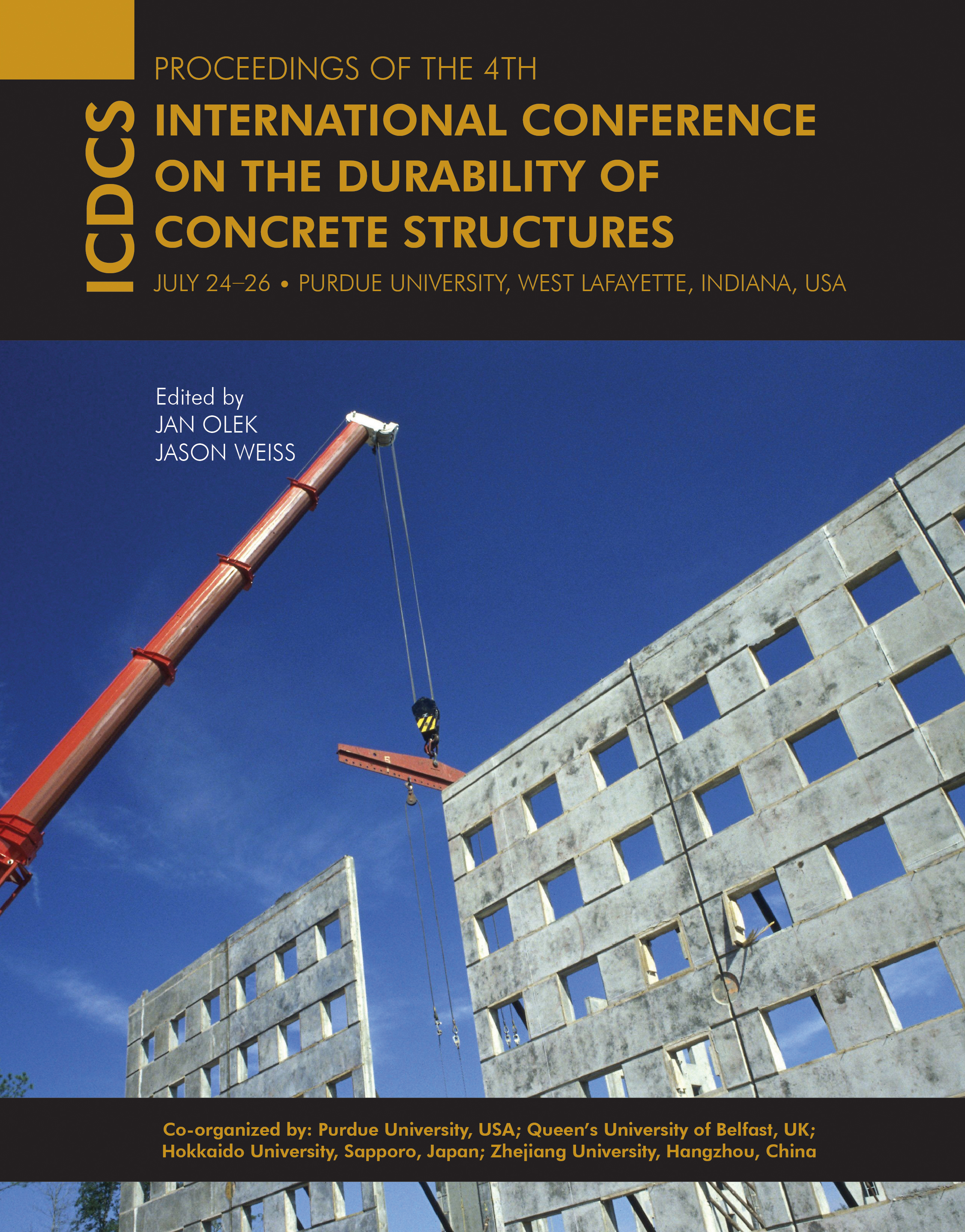Abstract
A new experimental method by utilizing elliptical rings to replace circular rings recommended by ASTM and AASHTO was explored for assessing cracking potential of concrete and other cement-based materials under restrained condition. A series of thin and thick elliptical concrete rings were tested alongside circular ones until cracking. Cracking age, position, and propagation were carefully examined. It is found that thin elliptical rings with appropriate geometry can initiate cracks quicker than circular ones, which is desirable for accelerating the ring test. However, thick elliptical rings seem not to exhibit a desirable geometry effect of accelerating ring test compared with circular ones. There were multiple visible cracks that occurred in an elliptical ring and some cracks were initiated but did not propagate through the ring wall. In comparison, there was only one crack in the circular rings. Finally, the features of multiple cracks in restrained elliptical rings were examined and their impact on interpreting elliptical ring test results was elaborated.
DOI
10.5703/1288284315418
On Utilization of Elliptical Rings in Assessing Cracking Tendency of Concrete
A new experimental method by utilizing elliptical rings to replace circular rings recommended by ASTM and AASHTO was explored for assessing cracking potential of concrete and other cement-based materials under restrained condition. A series of thin and thick elliptical concrete rings were tested alongside circular ones until cracking. Cracking age, position, and propagation were carefully examined. It is found that thin elliptical rings with appropriate geometry can initiate cracks quicker than circular ones, which is desirable for accelerating the ring test. However, thick elliptical rings seem not to exhibit a desirable geometry effect of accelerating ring test compared with circular ones. There were multiple visible cracks that occurred in an elliptical ring and some cracks were initiated but did not propagate through the ring wall. In comparison, there was only one crack in the circular rings. Finally, the features of multiple cracks in restrained elliptical rings were examined and their impact on interpreting elliptical ring test results was elaborated.





